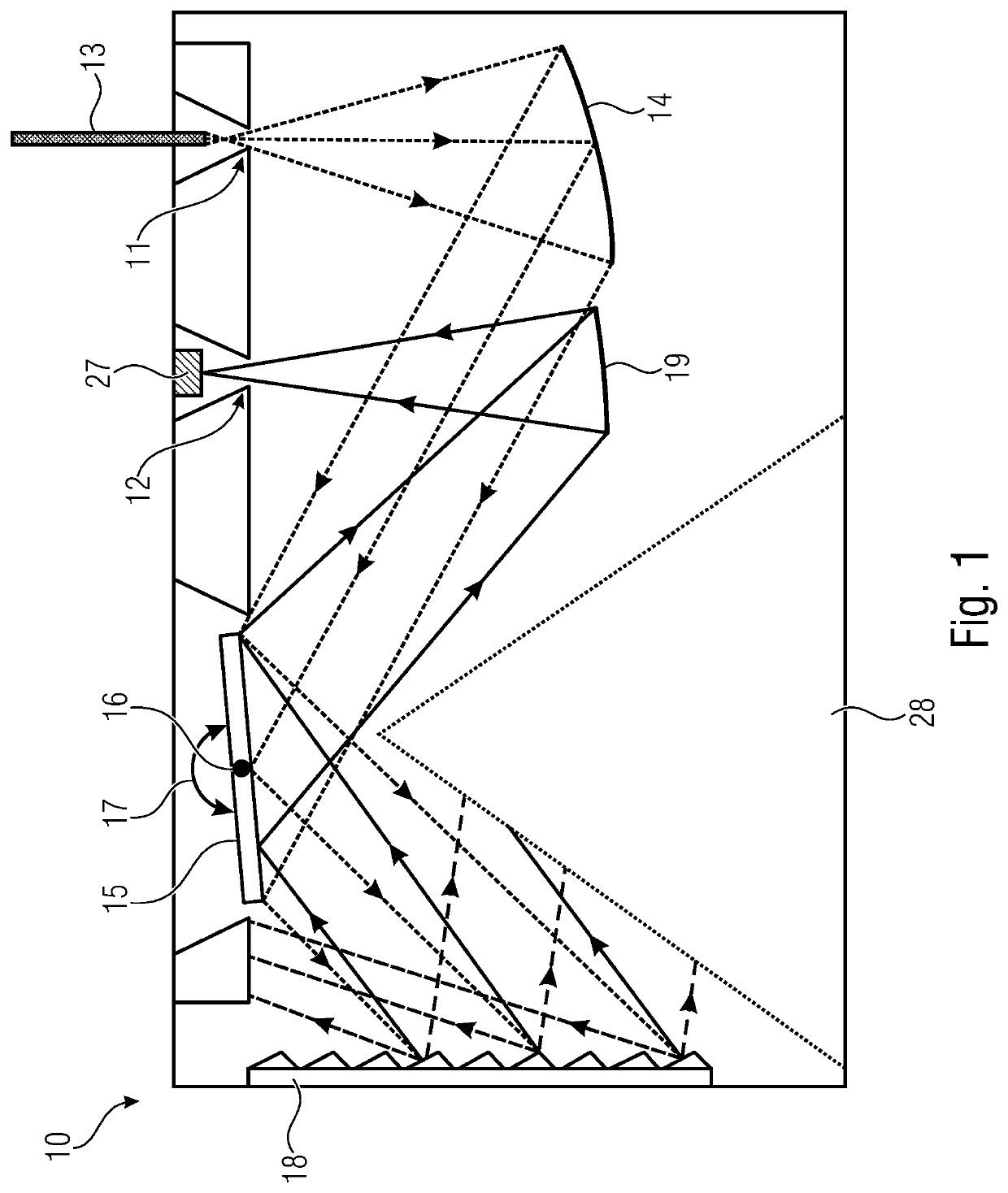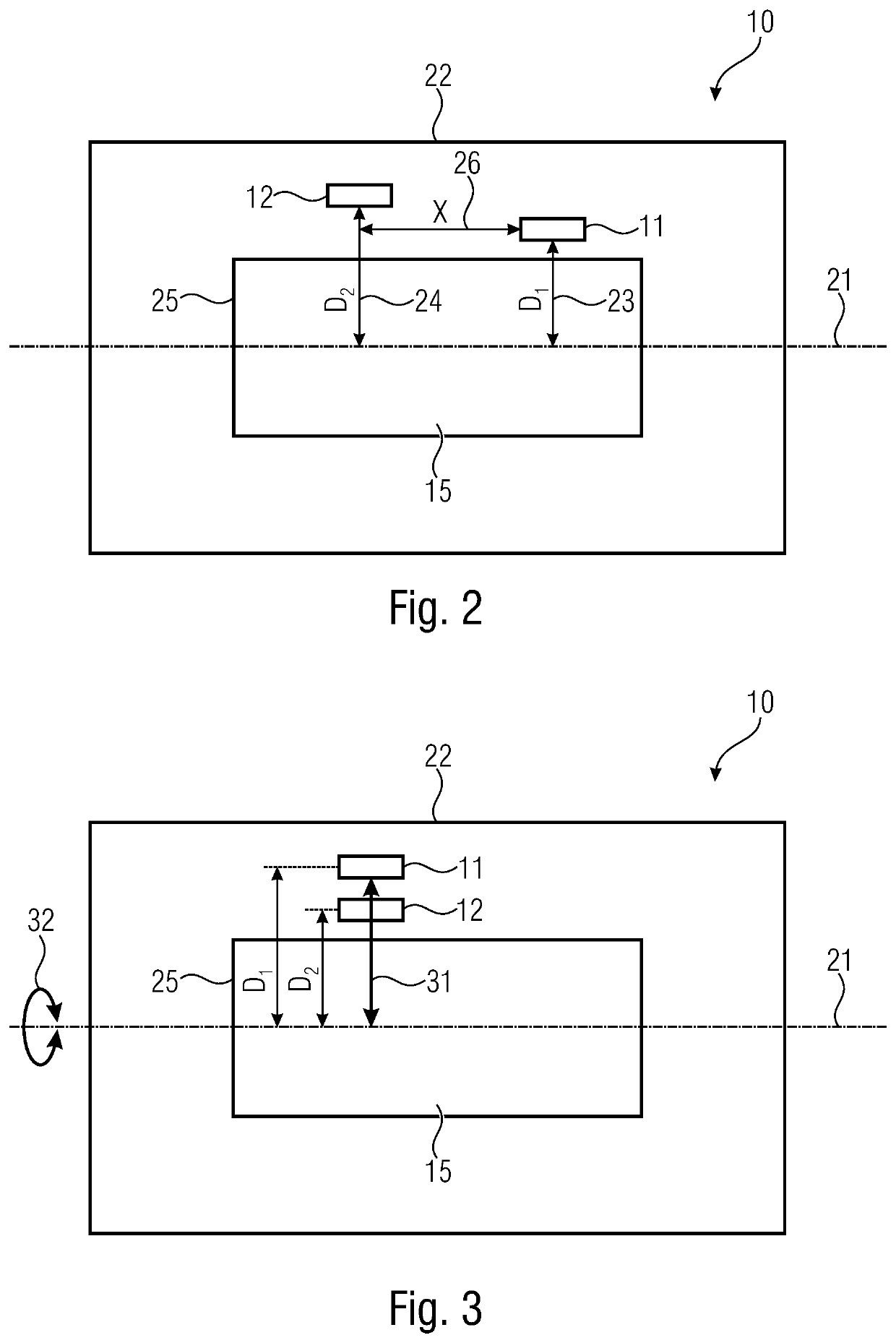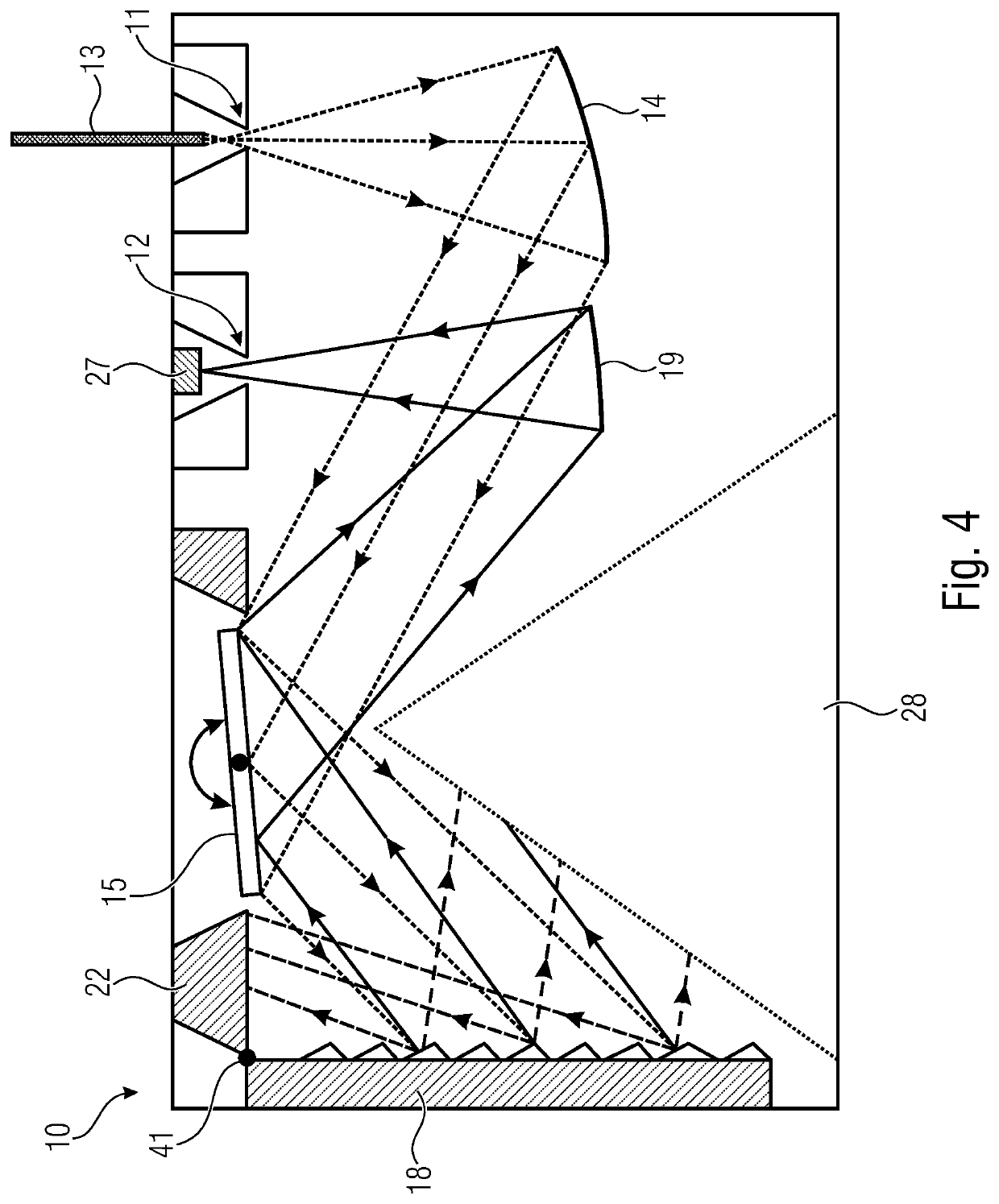Monolithically configured spectroscopic instrument
- Summary
- Abstract
- Description
- Claims
- Application Information
AI Technical Summary
Benefits of technology
Problems solved by technology
Method used
Image
Examples
Embodiment Construction
[0046]In the following, embodiments will be described in more detail with reference to the figures, elements having identical or similar functions being provided with identical reference numerals.
[0047]In addition, optical radiation shall be mentioned herein by way of example of electromagnetic radiation in general. Depending on the implementation of the inventive spectroscopic instrument, the optical radiation may be light of different wavelength ranges. For example, it may be infrared light, e.g., within the near-infrared range. However, in the inventive spectroscopic instrument it is also possible to use optical radiation within other wavelength ranges, e.g., within wavelength ranges which may range from ultraviolet (UV) to infrared (IR) via visible light (VIS).
[0048]In addition, slit diaphragms shall be mentioned as an example of aperture-limiting devices. Further conceivable examples of aperture limiting devices may be, for example, small openings, so-called pinholes, the ends ...
PUM
 Login to View More
Login to View More Abstract
Description
Claims
Application Information
 Login to View More
Login to View More - R&D
- Intellectual Property
- Life Sciences
- Materials
- Tech Scout
- Unparalleled Data Quality
- Higher Quality Content
- 60% Fewer Hallucinations
Browse by: Latest US Patents, China's latest patents, Technical Efficacy Thesaurus, Application Domain, Technology Topic, Popular Technical Reports.
© 2025 PatSnap. All rights reserved.Legal|Privacy policy|Modern Slavery Act Transparency Statement|Sitemap|About US| Contact US: help@patsnap.com



